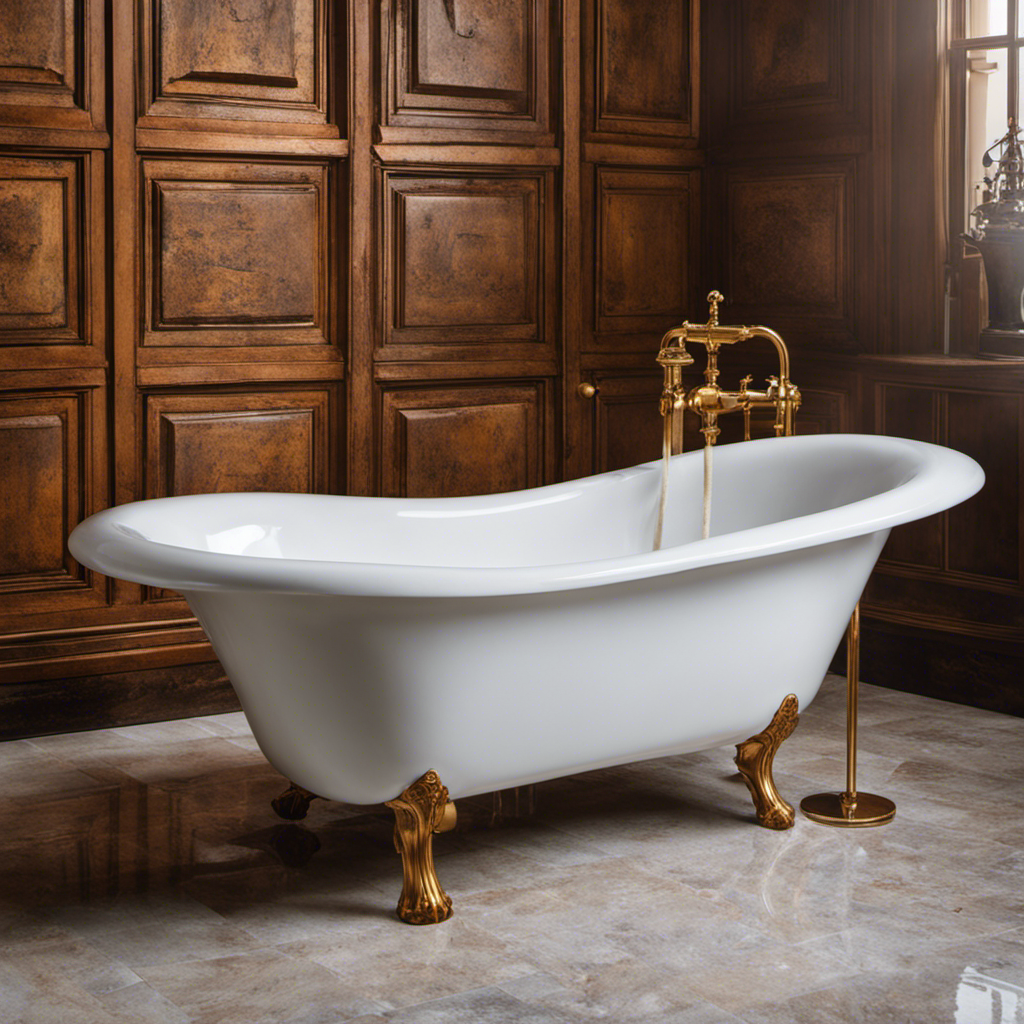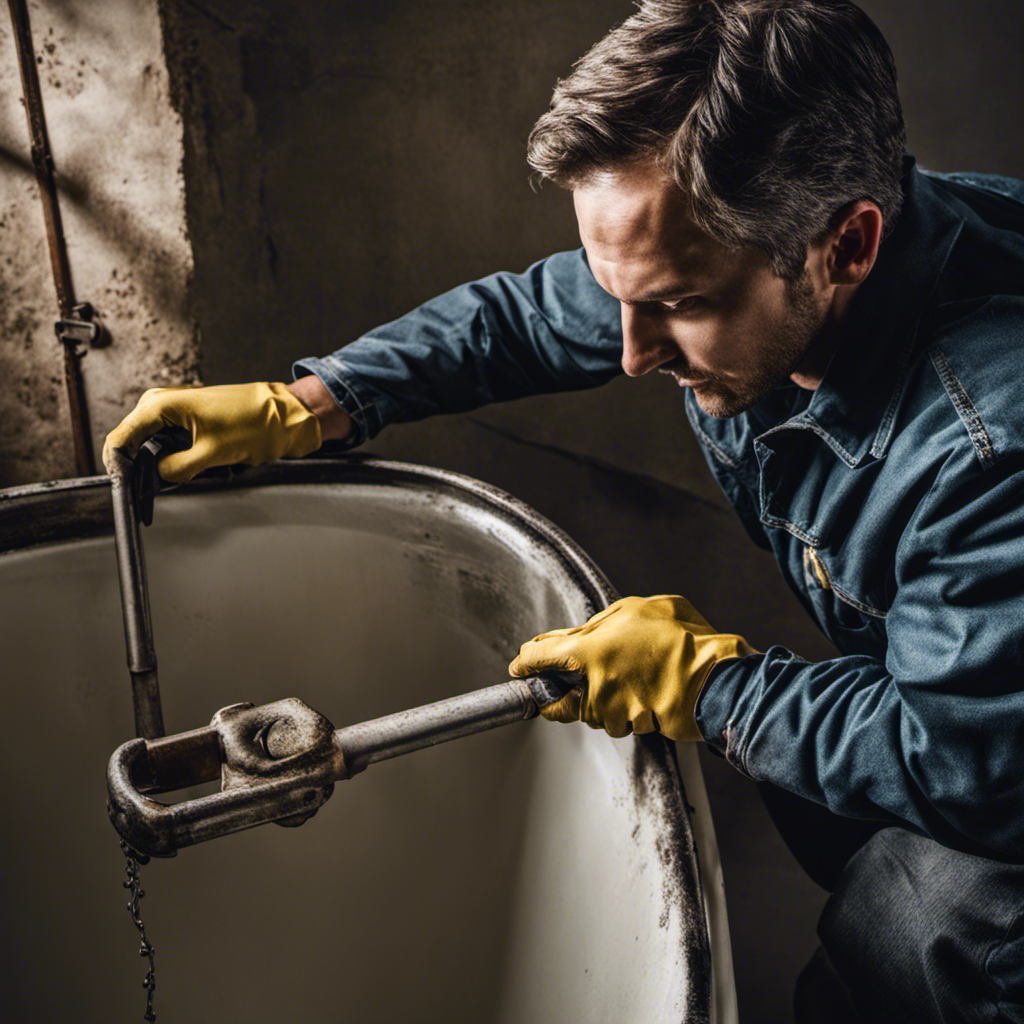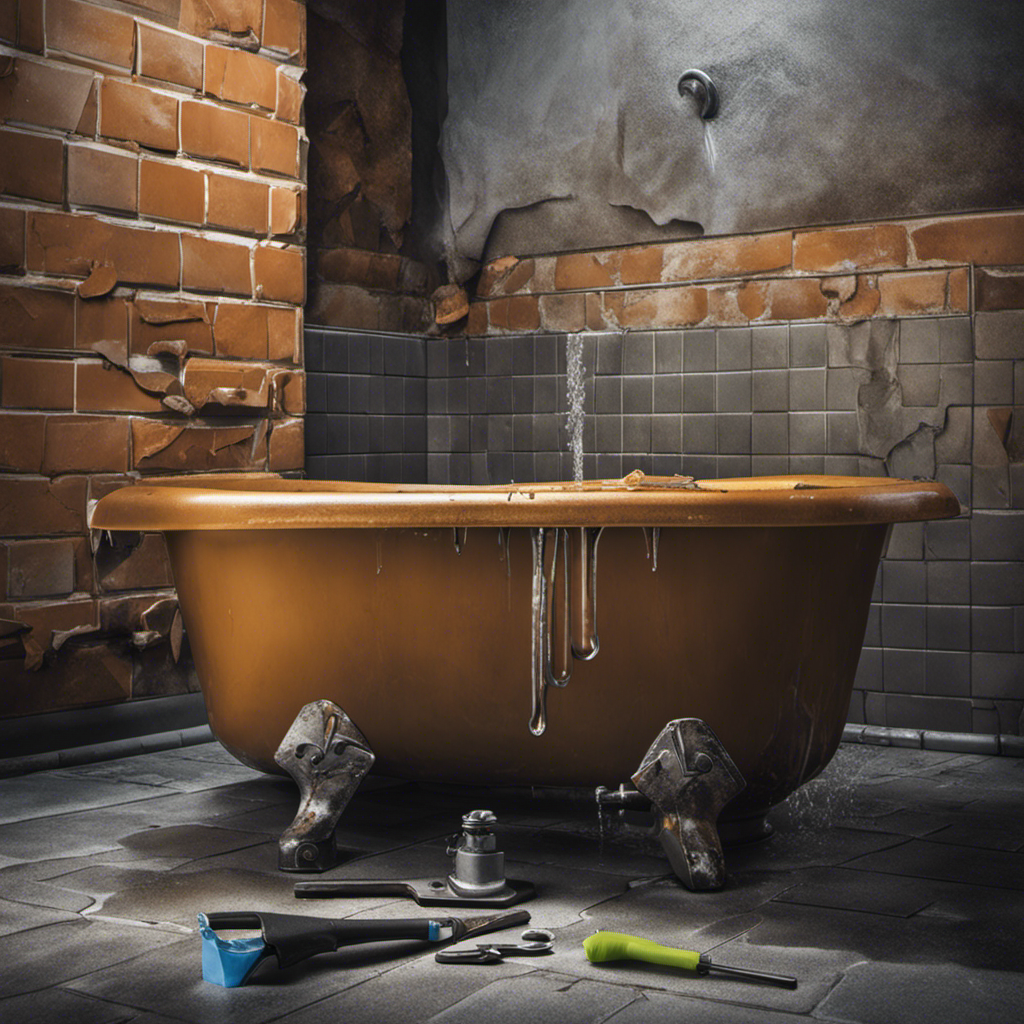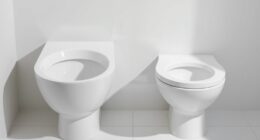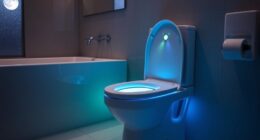As a seasoned homeowner, I’ve learned that rust stains on a porcelain bathtub can be a real headache. But fear not! I’m here to share my tried and true methods for removing those stubborn stains.
In this article, I’ll guide you through the causes of rust stains, the supplies you’ll need, and the step-by-step process to effectively remove them. By the end, you’ll have all the knowledge and tools you need to maintain a rust-free porcelain bathtub.
Let’s dive in!
Key Takeaways
- Regularly inspect and maintain plumbing systems to prevent rust.
- Use rust-resistant materials to avoid further staining.
- Consider using a rust stain remover with oxalic acid or hydrochloric acid.
- Lemon juice and baking soda or vinegar and baking soda can be effective natural remedies for rust stain removal.
Understanding the Causes of Rust Stains
To understand why rust stains appear on your porcelain bathtub, you need to know what causes them. Rust stains occur when iron particles come into contact with water and oxygen, causing a chemical reaction that results in the formation of reddish-brown stains. These iron particles can come from various sources, such as rusty pipes or fittings.
It’s important to prevent rust in other household items to avoid further staining. Regularly inspecting and maintaining plumbing systems, using rust-resistant materials, and keeping items dry can help prevent rust.
Additionally, removing rust from stainless steel appliances is essential to prevent the transfer of rust particles onto the bathtub. Using vinegar, lemon juice, or commercial rust removers can effectively remove rust stains from stainless steel appliances without damaging the surface.
Gathering the Necessary Supplies for Stain Removal
First, you’ll need to gather all the supplies necessary to get rid of those pesky rust stains on your porcelain bathtub.
When it comes to choosing the right cleaning products, there are a few options to consider. One effective choice is a rust stain remover specifically designed for porcelain surfaces. Look for a product that contains oxalic acid or hydrochloric acid, as these ingredients are known to break down rust stains effectively.
Alternatively, you can opt for natural remedies for stain removal. Lemon juice, vinegar, and baking soda are all excellent options for tackling rust stains. These natural ingredients have acidic properties that can help dissolve the rust and lift it off the surface of your bathtub.
Remember to wear gloves and follow the instructions carefully when using any cleaning product or natural remedy.
Preparing the Bathtub for the Cleaning Process
Next, make sure you have cleared the area around the bathtub to create a clean workspace for the cleaning process. This step is important because it allows you to have easy access to the bathtub and ensures that you won’t accidentally knock over any cleaning supplies.
To prevent future rust stains from appearing, it’s essential to keep the bathtub dry after each use. Wipe down the surface with a towel or squeegee to remove any water droplets that could lead to rust formation. Additionally, consider using a rust-resistant coating on your bathtub to provide an extra layer of protection.
If you’re looking for alternative methods to remove rust stains, you can try using lemon juice or vinegar mixed with baking soda. These natural ingredients can be effective in breaking down the rust and restoring the porcelain surface.
Applying Effective Rust Stain Removal Techniques
Using natural ingredients like lemon juice or vinegar mixed with baking soda can be a simple and effective way to break down rust and restore the surface of your bathtub. These ingredients have acidic properties that help dissolve the rust stains without damaging the porcelain. Here are some effective rust stain removal techniques you can try:
| Technique | Ingredients | Steps | Tips |
|---|---|---|---|
| Lemon Juice | Lemon juice, baking soda | 1. Squeeze the juice of a lemon onto the rust stains. 2. Sprinkle baking soda over the lemon juice. 3. Let it sit for 15-20 minutes. 4. Scrub with a soft brush or sponge. | Avoid using abrasive materials that can scratch the surface. |
| Vinegar | White vinegar, baking soda | 1. Mix equal parts vinegar and baking soda to form a paste. 2. Apply the paste on the rust stains. 3. Let it sit for 30 minutes. 4. Scrub gently with a cloth or sponge. | Open windows or use a fan to ventilate the area due to the strong smell of vinegar. |
Maintaining a Rust-Free Porcelain Bathtub
To keep your porcelain bathtub free from rust, it’s important to take regular preventive measures. Rust buildup can occur due to the constant exposure to water and moisture, which can cause the metal fixtures in your bathroom to corrode over time.
One effective way to prevent rust is by ensuring that your bathtub is properly sealed. Regularly inspect the caulk around the edges of your bathtub and reseal if necessary.
Additionally, make sure to wipe down your bathtub after each use to remove any excess moisture. If you do notice any rust stains starting to form, there are natural remedies you can use to remove them.
Lemon juice and baking soda make a powerful combination for rust removal. Simply mix them together to create a paste, apply it to the rust stains, let it sit for a few minutes, and then scrub with a soft brush.
Regular maintenance and natural remedies can help keep your porcelain bathtub rust-free and looking pristine.
Conclusion
In conclusion, removing rust stains from a porcelain bathtub may seem like a daunting task, but with the right techniques and supplies, it can be easily accomplished.
I remember the first time I tackled this challenge and was amazed at the transformation. It reminded me of a caterpillar turning into a butterfly, shedding its old rusty exterior to reveal a beautiful and pristine surface.
Just like the caterpillar, our bathtubs can also undergo a remarkable transformation with a little effort and the right tools.
So don’t let rust stains dampen your bathing experience, take action and restore your bathtub to its former glory.
